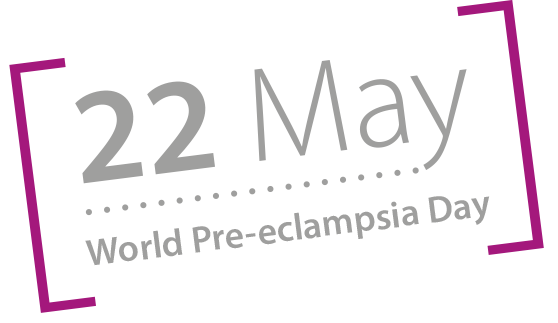Preeclampsia is a condition that causes dangerously high blood pressure. It can be life-threatening if left untreated. Preeclampsia typically happens after 20 weeks of pregnancy, often in women who have no history of high blood pressure.
#MayorHealth
#WorldPreeclampsiaDay2020
#MayorHealth
#WorldPreeclampsiaDay2020
What are the symptoms?
Symptoms of preeclampsia may include:
 https://abs.twimg.com/emoji/v2/... draggable="false" alt="⚡" title="High voltage sign" aria-label="Emoji: High voltage sign"> severe headache
https://abs.twimg.com/emoji/v2/... draggable="false" alt="⚡" title="High voltage sign" aria-label="Emoji: High voltage sign"> severe headache
 https://abs.twimg.com/emoji/v2/... draggable="false" alt="⚡" title="High voltage sign" aria-label="Emoji: High voltage sign">vision changes
https://abs.twimg.com/emoji/v2/... draggable="false" alt="⚡" title="High voltage sign" aria-label="Emoji: High voltage sign">vision changes
 https://abs.twimg.com/emoji/v2/... draggable="false" alt="⚡" title="High voltage sign" aria-label="Emoji: High voltage sign">pain under the ribs
https://abs.twimg.com/emoji/v2/... draggable="false" alt="⚡" title="High voltage sign" aria-label="Emoji: High voltage sign">pain under the ribs
However, many women don’t feel symptoms right away.
#MayorHealth
#WorldPreeclampsiaDay
#WorldPreeclampsiaDay2020
Symptoms of preeclampsia may include:
However, many women don’t feel symptoms right away.
#MayorHealth
#WorldPreeclampsiaDay
#WorldPreeclampsiaDay2020
The first alert is usually when a woman comes in for a routine prenatal visit and has high blood pressure. In those cases, your doctor will test for things like kidney and liver function to determine whether it’s preeclampsia or just high blood pressure
#MayorHealth
#MayorHealth
Who is at risk?
Risk factors for preeclampsia include
 https://abs.twimg.com/emoji/v2/... draggable="false" alt="⚡" title="High voltage sign" aria-label="Emoji: High voltage sign">having a history of high blood pressure
https://abs.twimg.com/emoji/v2/... draggable="false" alt="⚡" title="High voltage sign" aria-label="Emoji: High voltage sign">having a history of high blood pressure
 https://abs.twimg.com/emoji/v2/... draggable="false" alt="⚡" title="High voltage sign" aria-label="Emoji: High voltage sign">being obese (having a body mass index, or BMI, greater than 30)
https://abs.twimg.com/emoji/v2/... draggable="false" alt="⚡" title="High voltage sign" aria-label="Emoji: High voltage sign">being obese (having a body mass index, or BMI, greater than 30)
 https://abs.twimg.com/emoji/v2/... draggable="false" alt="⚡" title="High voltage sign" aria-label="Emoji: High voltage sign"> age (teenage mothers and those over 40 are at higher risk)
https://abs.twimg.com/emoji/v2/... draggable="false" alt="⚡" title="High voltage sign" aria-label="Emoji: High voltage sign"> age (teenage mothers and those over 40 are at higher risk)
 https://abs.twimg.com/emoji/v2/... draggable="false" alt="⚡" title="High voltage sign" aria-label="Emoji: High voltage sign">being pregnant with multiples
https://abs.twimg.com/emoji/v2/... draggable="false" alt="⚡" title="High voltage sign" aria-label="Emoji: High voltage sign">being pregnant with multiples
#MayorHealth
Risk factors for preeclampsia include
#MayorHealth
Can you prevent it?
While you can’t prevent preeclampsia, staying healthy during pregnancy may help. If you have risk factors, experts recommend that you see your obstetrician either before you become pregnant or very early in your pregnancy
#WorldPreeclampsiaDay
#MayorHealth
While you can’t prevent preeclampsia, staying healthy during pregnancy may help. If you have risk factors, experts recommend that you see your obstetrician either before you become pregnant or very early in your pregnancy
#WorldPreeclampsiaDay
#MayorHealth
so you and your doctor can discuss ways that you can reduce your risk. For example, many women at risk for preeclampsia are prescribed a baby aspirin after the first trimester.
#MayorHealth
#WorldPreeclampsiaDay
#WorldPreeclampsiaDay2020
#MayorHealth
#WorldPreeclampsiaDay
#WorldPreeclampsiaDay2020
Regular prenatal visits are the best way to control preeclampsia. During those routine visits, your doctor will check your blood pressure. If it’s high, further tests can diagnose the condition so you can start getting the treatment you need.
#MayorHealth
#WorldPreeclampsiaDay
#MayorHealth
#WorldPreeclampsiaDay
How is it treated?
The condition only goes away once the baby is born, so delivery is the best way to treat preeclampsia. However, delivering the baby too early can put the baby at risk for health problems.
#MayorHealth
#WorldPreeclampsiaDay
#WorldPreeclampsiaDay2020
The condition only goes away once the baby is born, so delivery is the best way to treat preeclampsia. However, delivering the baby too early can put the baby at risk for health problems.
#MayorHealth
#WorldPreeclampsiaDay
#WorldPreeclampsiaDay2020
The decision about how to treat you will largely depend on how far along the pregnancy is. You may need to be hospitalized so your team can monitor you and your baby closely.
#MayorHealth
#WorldPreeclampsiaDay
#WorldPreeclampsiaDay2020
#MayorHealth
#WorldPreeclampsiaDay
#WorldPreeclampsiaDay2020
The decision about how to treat you will largely depend on how far along the pregnancy is. You may need to be hospitalized so your team can monitor you and your baby closely.
#MayorHealth
#WorldPreeclampsiaDay
#WorldPreeclampsiaDay2020
#MayorHealth
#WorldPreeclampsiaDay
#WorldPreeclampsiaDay2020
What should I ask my doctor?
Your doctor will discuss the risks and benefits of delivering the baby early versus continuing the pregnancy and trying to manage the preeclampsia as long as possible through other methods.
#WorldPreeclampsiaDay
#WorldPreeclampsiaDay2020
Your doctor will discuss the risks and benefits of delivering the baby early versus continuing the pregnancy and trying to manage the preeclampsia as long as possible through other methods.
#WorldPreeclampsiaDay
#WorldPreeclampsiaDay2020
After delivery, the condition will go away, but you will be at greater risk for heart disease later in life. Talk to your doctor about what you can do to help reduce and manage those risks.
#WorldPreeclampsiaDay
#WorldPreeclampsiaDay2020
#WorldPreeclampsiaDay
#WorldPreeclampsiaDay2020
Although complications are rare, a number of complications can develop if pre-eclampsia isn& #39;t diagnosed and monitored.
These problems can affect both the mother and her baby.
#WorldPreeclampsiaDay
#WorldPreeclampsiaDay2020
#MayorHealth
These problems can affect both the mother and her baby.
#WorldPreeclampsiaDay
#WorldPreeclampsiaDay2020
#MayorHealth

 Read on Twitter
Read on Twitter


